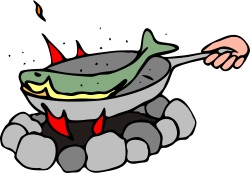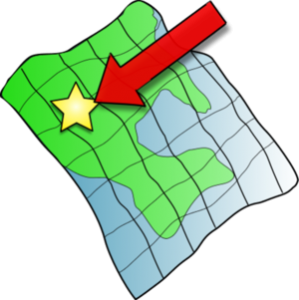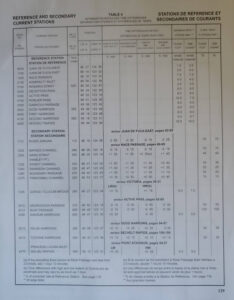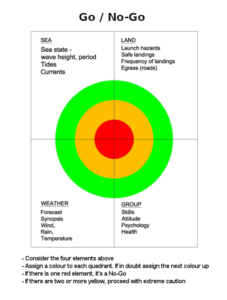 Use the following check lists, forms and websites when planning a trip.
Use the following check lists, forms and websites when planning a trip.
Preparing for your trip
What to bring:
- Gear Checklist — make sure you bring everything you need, including emergency equipment.
- First Aid Kit checklist — recommended list of first aid materials.
Planning and information gathering:
- Medical Information form — when going out on a trip, especially a multi-day trip, use this form to capture everyone's medical information.
- Float Plan — capture important trip and contact information; leave one or more copies with friends or family in case of emergency.
- Launch Site Checklist — points to check before putting the boats in the water. (Recommend creating a laminate with the Go/No-Go graphic on the back.)
- Whistle & Paddle Signals — reminder of whistle and paddle signals to use on the water when verbal communication is difficult.
- First Aid Report form — keep copies of this document in your first aid kit to capture important information in case of an incident or illness.
-
- Meal Planning form or Meal Planning Spreadsheet to ensure you have all meals covered and distribute cooking duties as needed
- Need meal ideas? Check out these recipes, or specifically look for vegetarian recipes.
Destinations and Route Planning Websites
- BC Marine Trail Network Association
- Gulf Islands National Park Reserve
- NOAA Coast Survey Chart Locator
- Tides and Currents
- Secondary Current Stations Reference Page
- Environment Canada Marine Forecasts
- Marine Forecast Areas, Observation Site and Radio Network
- Oceanography of the British Columbia Coast
General safety and equipment information
- PFDs vs Life Jackets -- understanding the difference
- Cold Water Immersion -- what it is and what you need know
- Sea Kayaking Safety Guide by Transport Canada as referenced in the SKABC Beginners Course
- Digital Tools for Sea Kayaking (2019)
Conservation Best Practices at Camp and While Touring
Low Impact Camping
- Plan ahead and prepare.
- Camp and travel on durable surfaces.
- Dispose of waste properly.
- Leave what you find.
- Minimize campfire impacts.
- Respect wildlife.
- Be considerate of other visitors.
You can find a detailed description of Low Impact Camping Principles (![]() PDF) here.
PDF) here.
The following books can be borrowed from SKABC's library or purchased at MEC:
- "Leave No Trace - A Guide to the New Wilderness Etiquette" (2nd Edition) by Annette McGivney
- "Soft Paths - National Outdoor Leadership School" by Bruce Hampton and David Cole
- "How to Shit in the Woods" by Kathleen Meyers.
Wildlife Viewing Guidelines
 As a visitor to the coastal environment, you must be aware of how your being there impacts wildlife. Human presence creates stress and generally causes the animal to expend energy - to swim, run or fly away - in order to feel safe. Prolonged or repeated disturbance can negatively impact an animal's mortality rate.
As a visitor to the coastal environment, you must be aware of how your being there impacts wildlife. Human presence creates stress and generally causes the animal to expend energy - to swim, run or fly away - in order to feel safe. Prolonged or repeated disturbance can negatively impact an animal's mortality rate.
There are a number of characteristics unique to sea kayaking that increase the potential for harassment of marine mammals and seabirds. We are low lying, slow moving objects that travel in areas power boats and sail boats rarely enter. From the perspective of the animal, our approach is silent and without warning. Kayakers gravitate towards the shore-line, staying close to the inter-tidal zone where many species feed and find protection.
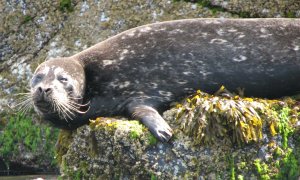 Some guidelines to minimize your impact:
Some guidelines to minimize your impact:
- Minimum viewing distance of 100 metres (approximately the distance of a football field). If your kayaking party finds itself unexpectedly within 100 metres of a whale(s), stop immediately and allow the whale(s) to pass.
- Avoid approaching whales from the front or from behind.
- Always approach and depart whales from the side, moving in a direction parallel to the direction of the whales.
Seal and sea lion haul-outs and rookeries should not be approached. Use binoculars to observe animals from a distance and back off at any sign of agitation. - If you find an abandoned seal pup, leave it alone. Note where it is and when you saw it, and contact the appropriate officials when you are near a phone.
- Sometimes marine mammals appear inquisitive and follow or watch a kayak from the water. In these situations, it is appropriate to observe the animal from whatever distance it chooses however, you should not approach it.
- Do not swim with marine mammals.
- Stay off nesting sites. If a seabird is vocalizing at you, take the hint and move away from what the bird is trying to protect. If you are disturbing seabirds, its predators (for example crows) may use that opportunity to seize eggs or young birds.
- Various birds, sea otters and other species often rest afloat in large groups. It is not acceptable to disturb such groups - you are there for your recreation only, so you can certainly divert around them. How would you like being woken and harassed by fun seekers?
Reporting Cetacean Sightings
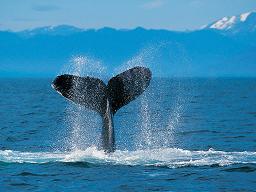 Report sightings of dolphins, whales and porpoises to BC Cetacean Sightings Network.
Report sightings of dolphins, whales and porpoises to BC Cetacean Sightings Network.
The information is valuable in achieving DFO science objectives and can assist researchers in locating the animals and furthering their investigations.

